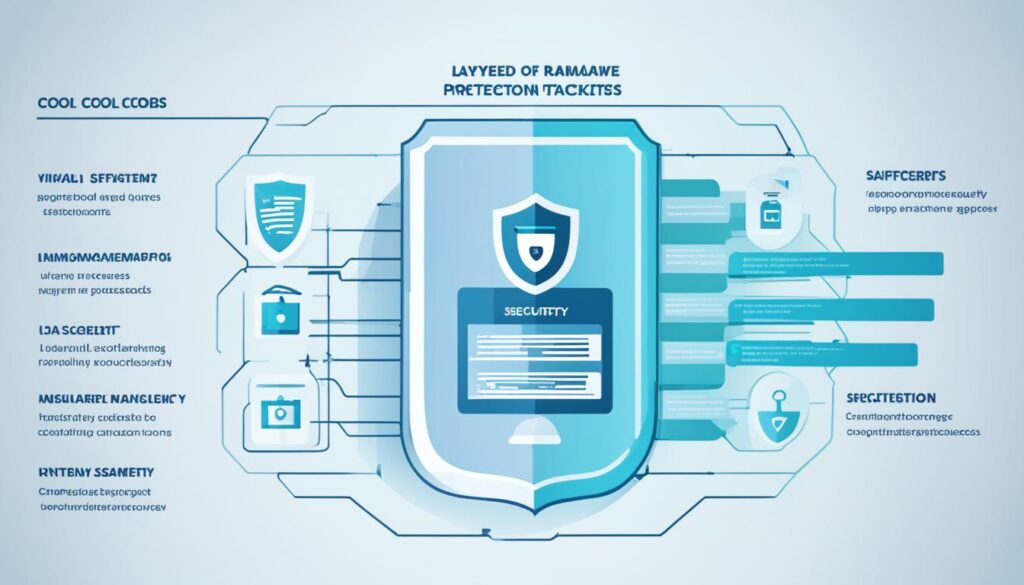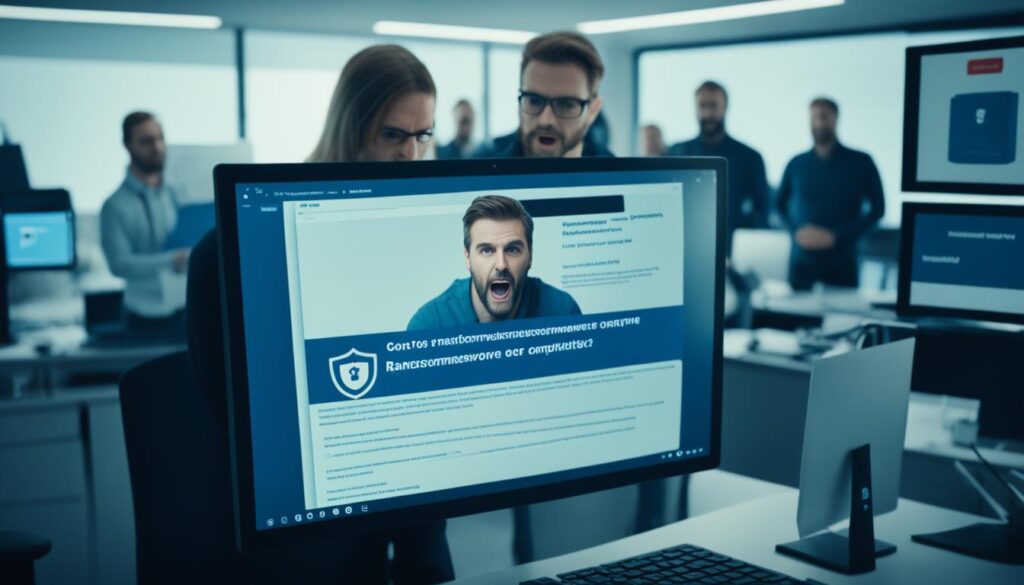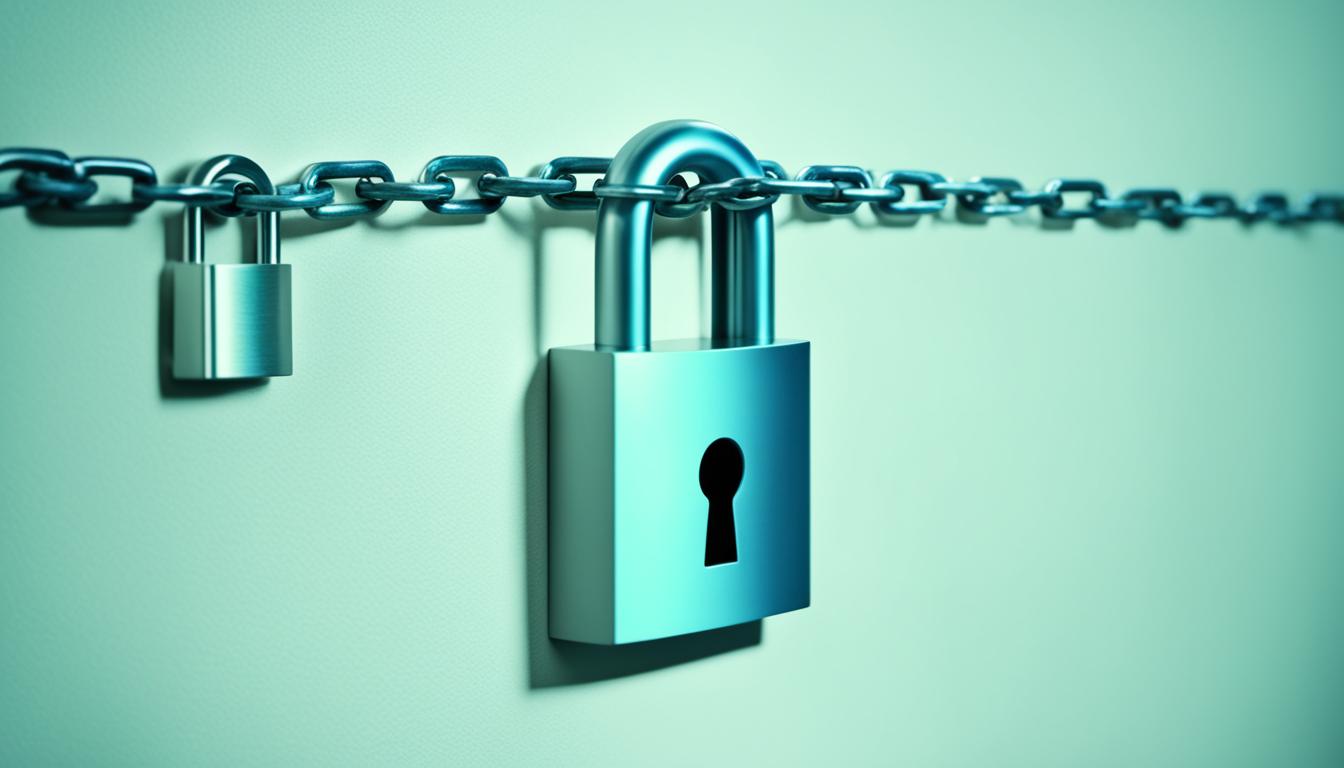Ransomware attacks pose a significant threat to businesses, with small businesses being particularly vulnerable. According to the Ransomware Taskforce, small businesses accounted for 70% of ransomware attacks in 2021. To protect your business from these attacks, it is crucial to implement effective ransomware prevention strategies. This article will provide you with key tips and best practices to safeguard your business data and mitigate the risks of ransomware attacks.
Key Takeaways
- Regularly update your software to ensure you have the latest security patches and upgrades.
- Take a layered approach to security by using multiple tools such as firewalls, antivirus software, and spam filters.
- Provide comprehensive employee awareness training to prevent insider threats and educate employees about ransomware and phishing.
- Implement data access and authentication controls, including the principle of least privilege and multifactor authentication.
- Stay proactive and informed about emerging threats to enhance your business’s cybersecurity.
Keeping Software Up to Date
One of the essential steps in preventing ransomware attacks is to keep your software up to date. Software updates often include important security patches and upgrades that can protect against known vulnerabilities. It is crucial to regularly update your security programs, as well as any other apps and software you use. By staying vigilant and promptly installing updates, you can strengthen your defenses against ransomware attacks.
Importance of Software Updates
Software updates play a crucial role in maintaining the overall security of your systems. They address vulnerabilities that hackers can exploit to gain unauthorized access to your data or introduce malicious software. By regularly updating your software, you ensure that these vulnerabilities are patched, reducing the risk of ransomware attacks.
Security patches within software updates fix known vulnerabilities and protect against emerging threats. Cybercriminals are continually evolving their tactics, finding new ways to exploit weaknesses in software. That’s why software providers release regular updates to address these vulnerabilities and enhance the security of their products.
Prompt Installation of Updates
When software updates become available, it is essential to install them promptly. Delaying or ignoring updates can leave your systems exposed to potential threats. Hackers often exploit unpatched software, taking advantage of known vulnerabilities to infiltrate systems and deploy ransomware.
Modern operating systems and software applications often provide automatic update options. Enabling automatic updates ensures that you receive the latest security patches without having to manually check for updates. By adopting this approach, you can minimize the risk of missing critical updates and maintain a secure computing environment.
Creating a Software Update Policy
To ensure software updates are consistently implemented across your organization, it is valuable to establish a software update policy. This policy should outline guidelines for updating operating systems, software applications, and security programs. It can specify procedures for testing updates in a controlled environment before deploying them across the network.
Regularly review and update the policy to align with the evolving threat landscape and changing software requirements. By adhering to a well-defined software update policy, you can enhance your organization’s overall security posture and protect against ransomware attacks.

| Benefits of Keeping Software Up to Date |
|---|
| Enhanced security |
| Protection against known vulnerabilities |
| Prevention of unauthorized access |
| Reduction in the risk of ransomware attacks |
| Improved stability and performance |
Layering Security Measures
Protecting your business from ransomware attacks requires a comprehensive and layered security approach. By utilizing multiple security tools, you can create a robust defense system that significantly reduces the risk of infiltration. The following measures are essential in implementing a layered security approach:
Firewall
A firewall acts as a barrier between your internal network and external threats, helping to block unauthorized access and potential ransomware attacks. It monitors network traffic and applies access control policies, enhancing your overall security posture.
Antivirus Software
Antivirus software plays a crucial role in detecting and removing known malware, including ransomware. It scans files and programs for malicious code, providing real-time protection against threats that may attempt to breach your system.
Anti-malware Software
In addition to antivirus software, utilizing anti-malware software provides an added layer of protection against a wide range of malicious threats, including ransomware. Anti-malware tools are designed to detect and remove various types of malware, bolstering your defense mechanisms.
Spam Filters
Ransomware attacks often originate from phishing emails and malicious attachments. Implementing robust spam filters helps identify and block suspicious emails, reducing the chances of user interaction with potentially harmful content.
Cloud data loss prevention:
“Protecting your valuable data stored in the cloud is crucial in preventing ransomware attacks. Implementing cloud data loss prevention solutions can help identify, encrypt, and secure sensitive information, mitigating the risk of unauthorized access or data compromise.”
By combining these security measures, you form a multi-faceted defense system that detects and prevents ransomware attacks more effectively. The layered security approach adds resilience and improves your ability to safeguard your business and its data.

Continue reading to learn more about employee awareness training and comprehensive data access and authentication controls.
Employee Awareness Training
Employee awareness and education play a crucial role in safeguarding your business from ransomware attacks. Many of these attacks originate from insider threats, often resulting from employee negligence or human error. By providing comprehensive training on ransomware and its potential risks, you can empower your employees to be the first line of defense against these attacks.
- Ransomware Awareness: Educate your employees about the different types of ransomware and the tactics used by cybercriminals to trick them into downloading malicious software.
- Phishing Awareness: Teach your employees how to recognize and avoid phishing emails, which are commonly used to deliver ransomware. Emphasize the importance of not clicking on suspicious links or opening attachments from unknown sources.
- Best Practices: Provide clear guidelines on best practices for maintaining a secure work environment. This includes regularly updating passwords, using strong and unique passwords, and enabling multi-factor authentication whenever possible.
By investing in employee education, you are strengthening your company’s defenses against ransomware attacks. With informed employees who are aware of the risks and knowledgeable about the best practices, you can significantly reduce the likelihood of falling victim to these malicious attacks.

Training your employees is an ongoing process. Regularly remind them of the importance of cybersecurity and provide refresher courses to ensure they stay vigilant. Remember, a well-trained and aware workforce is crucial in protecting your business from insider threats and other forms of cyberattacks.
Data Access and Authentication Controls
Implementing proper data access and authentication controls is essential for preventing unauthorized access to your business data. By following these recommended practices, you can enhance the security of your systems and protect sensitive information from potential threats.
Principle of Least Privilege
The principle of least privilege involves granting minimal access privileges to files, programs, and accounts based on job requirements. By limiting user access rights to only what is necessary for their specific roles, you can minimize the potential damage that can result from a compromised account.
Multifactor Authentication
Multifactor authentication adds an extra layer of security by requiring users to provide multiple forms of verification before accessing sensitive data or systems. This can include something the user knows (such as a password), something they have (such as a security token or fingerprint), or something they are (such as biometric data). By implementing multifactor authentication, you can significantly reduce the risk of unauthorized access.
Strong Password Requirements
Enforcing strong password requirements is essential to thwarting attempts to guess or crack passwords. Encourage your users to create unique, complex passwords that include a combination of uppercase and lowercase letters, numbers, and special characters. Regularly remind them to update their passwords and avoid using easily guessable information.
Application Whitelisting
Application whitelisting is a technique that allows only trusted files, applications, and processes to run on your systems. By creating a whitelist of approved software, you can mitigate the risk of unauthorized or malicious programs executing and delivering ransomware. Regularly update and maintain your whitelist to ensure that only trusted applications are allowed to run.
By implementing these data access and authentication controls, you can strengthen your defenses against unauthorized access and reduce the risk of ransomware attacks. These measures, combined with other security strategies discussed in this article, will help safeguard your business data and ensure the continuity of your operations.
| Data Access and Authentication Controls | Benefits |
|---|---|
| Principle of Least Privilege | Minimizes the damage from compromised accounts |
| Multifactor Authentication | Enhances security by requiring multiple forms of verification |
| Strong Password Requirements | Thwarts attempts to guess or crack passwords |
| Application Whitelisting | Reduces the risk of unauthorized software executing |

Conclusion
Protecting your business from ransomware attacks is paramount in today’s threat landscape. By implementing the preventive measures discussed in this article, including keeping your software up to date, layering security measures, providing employee awareness training, implementing data access controls, and utilizing strong authentication methods, you can significantly reduce the risk of falling victim to ransomware attacks.
Cybersecurity is an ongoing effort, and it is vital to stay informed about emerging threats to ensure the security of your business data. By regularly monitoring and updating your security protocols, staying up to date with the latest cybersecurity best practices, and investing in robust cybersecurity solutions, you can safeguard your business from the devastating consequences of ransomware attacks.
Remember, prevention is key. By prioritizing ransomware prevention strategies, practicing effective business data security, and implementing comprehensive cybersecurity practices, you can proactively protect your business from ransomware attacks and ensure the integrity and confidentiality of your valuable data.
FAQ
How often should I update my software?
It is crucial to regularly update your software, including security programs, apps, and other software, to protect against known vulnerabilities and strengthen your defenses against ransomware attacks.
What security measures should I use to prevent ransomware attacks?
Taking a layered approach to security is highly recommended. Essential security measures include using a firewall, antivirus software, anti-malware software, spam filters, and cloud data loss prevention. By having multiple layers of protection, you can enhance your ability to detect and prevent ransomware attacks.
How can I educate my employees about ransomware prevention?
Employee awareness and education are crucial for preventing ransomware attacks. Comprehensive training on recognizing and avoiding phishing emails, not opening suspicious attachments, and being cautious of suspicious links can empower your employees to be the first line of defense against attacks.
What are data access and authentication controls, and why are they important?
Data access and authentication controls involve granting minimal access based on job requirements, implementing multifactor authentication, enforcing strong password requirements, and using application whitelisting. These measures prevent unauthorized access to your business data and reduce the risk of ransomware attacks.
How can I safeguard my business from ransomware attacks?
By following preventive measures such as keeping software up to date, layering security measures, providing employee awareness training, implementing data access controls, and using strong authentication methods, you can significantly reduce the risk of falling victim to ransomware attacks and protect your business data.








